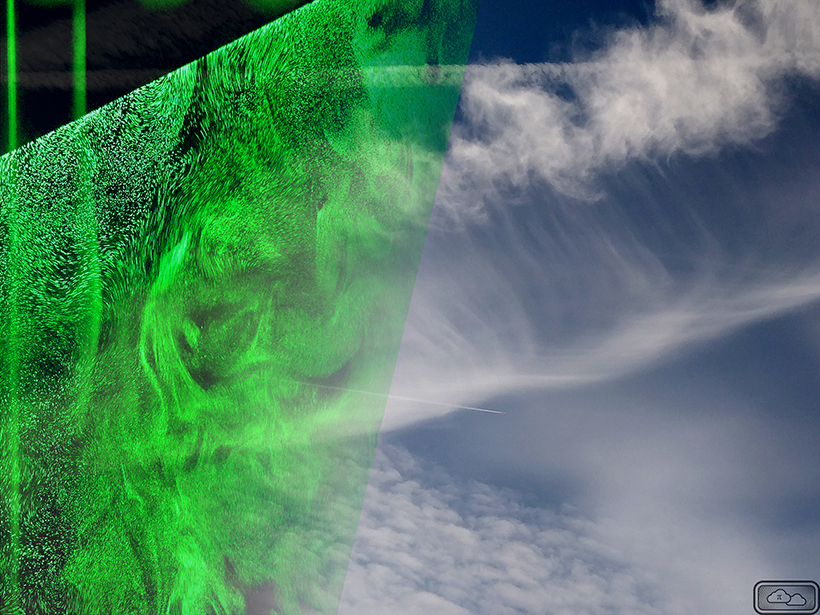Source: Journal of Geophysical Research: Atmospheres
Clouds form when water vapor in moist packets of air condenses onto atmospheric aerosols, such as particles of dust. The transition from dry particle to liquid water droplet is known as activation. The threshold for activation is a function of an aerosol’s size and chemical composition, as well as of the relative humidity of the local air. As a given particle’s size and composition are fixed, activation occurs principally when a packet of air crosses a water saturation level called critical supersaturation.
Typically, when a parcel of moist air rises, it cools, reducing the air’s ability to contain water vapor and driving the parcel toward critical supersaturation. Traditional theory and laboratory simulations have neglected dynamical processes, such as turbulence, within the parcel and assumed that the parcel is well described by a single temperature and relative humidity. However, recent in situ observations suggest that turbulence can create variations of 0.1%–0.3% in the value of the parcel’s saturation ratio.
Shawon et al. used a new state-of-the-art cloud chamber to investigate the effects of turbulence on cloud formation in the laboratory. To perform their investigations, they created a supersaturated environment within the chamber, initially devoid of aerosols. By setting the top and the bottom of the chamber to different temperatures, they induced turbulent air movement. Then they injected submicrometer-sized dry sodium chloride particles into the chamber to act as the nucleation sites for cloud droplet formation and observed the steady state results.
By fixing the aerosol size and composition, as well as the temperature and initial saturation level of the chamber, the authors isolated the effect of turbulence. They found that in these conditions, aerosol particles with the same physical characteristics in the same packet of air could activate or not activate because of turbulence-induced variation in local supersaturation. Because activation occurs when the critical supersaturation threshold is reached, turbulence may briefly push more particles over that limit, resulting in larger overall activation fractions.
According to the authors, turbulence effects may play an important role in the transition between cloud types. This may be especially true for clouds moving from land-based to sea-based environments, during which the population of available aerosols also changes. (Journal of Geophysical Research: Atmospheres, https://doi.org/10.1029/2020JD033799, 2021)
—Morgan Rehnberg, Science Writer
Citation:
Rehnberg, M. (2021), Atmospheric turbulence may promote cloud droplet formation, Eos, 102, https://doi.org/10.1029/2021EO155989. Published on 18 March 2021.
Text © 2021. AGU. CC BY-NC-ND 3.0
Except where otherwise noted, images are subject to copyright. Any reuse without express permission from the copyright owner is prohibited.
Text © 2021. AGU. CC BY-NC-ND 3.0
Except where otherwise noted, images are subject to copyright. Any reuse without express permission from the copyright owner is prohibited.

